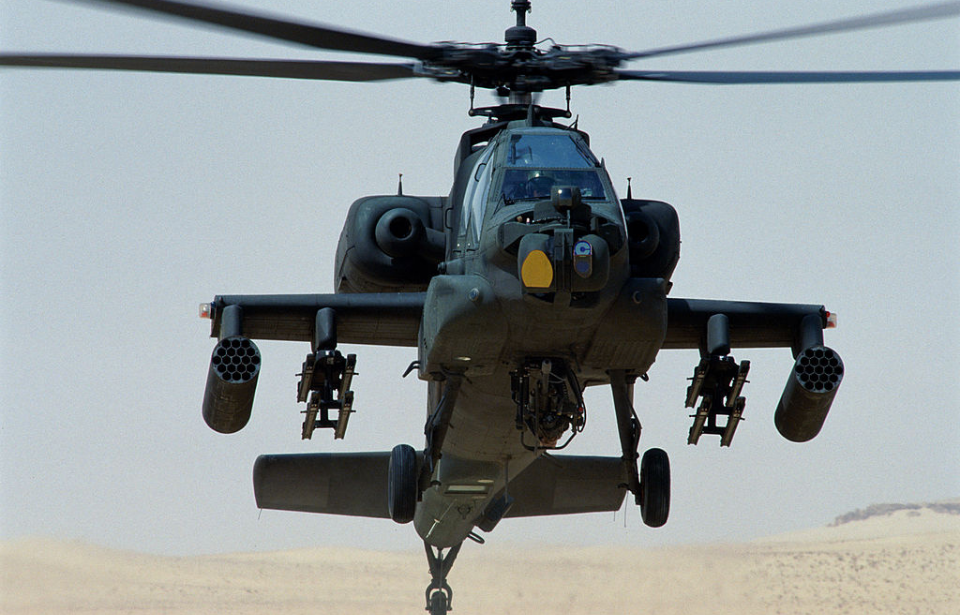The Boeing AH-60 Apache helicopter is by far one of the most advanced aircraft produced today. The twin-turboshaft attack helicopter has seen use in numerous combat situations, from the Gulf War to the Iraq War, and is known for its abilities on the frontline.
It features a nose-mounted sensor for target acquisition, night vision systems, a tailwheel-type landing gear, a four-blade main rotor, and a four-blade tail rotor. It’s powered by two General Electric T700 turboshaft engines, with high-mounted exhausts on each side of the fuselage. The cockpit allows for two crew members – pilot and gunner – who are able to fly the aircraft and operate its weaponry.
This ensures the AH-60 Apache helicopter can perform its duties, regardless of the time of day or weather conditions.
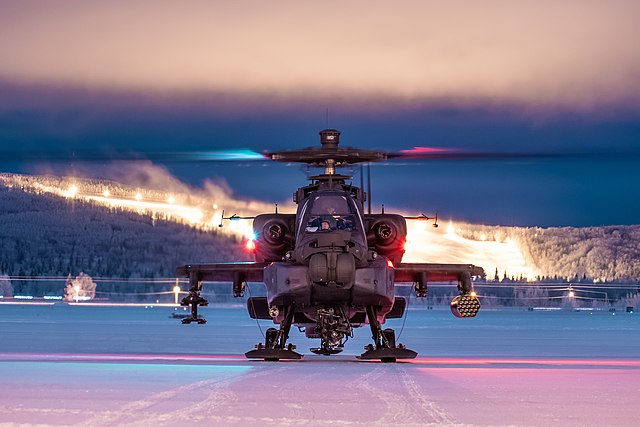
The Apache’s prototype experienced its maiden flight on September 30, 1975, and was approved for production in 1982. It entered service in 1986, seeing combat three years later. According to Boeing, there are more than 1,200 in operation across the world. Together they’ve accumulated over four million flight hours, 1.3 million of which have been in combat.
The models used by the US Army are the AH-64D Longbow and the AH-64E. It is the most advanced, incorporating the latest navigation, sensor, communications, and weapons systems. Among its upgrades are the Improved Modernized Target Acquisition Designation Sight/Pilot Night Vision System (MTADS/PNVS) and an updated Small Tactical Terminal radio that allows for communication in joint environments.
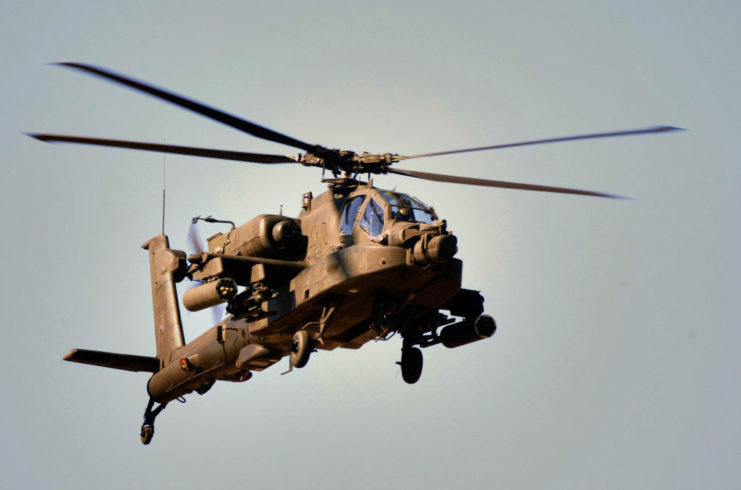
Now that we’ve reviewed the basics, here are some facts about the AH-64 Apache helicopter.
AH-64 Apache helicopters can operate at sea
While the majority of helicopters can’t operate at sea, the Apache can, thanks to its Fire Control Radar. It serves a purpose in these situations by working with US Navy transport craft and aircraft carriers.
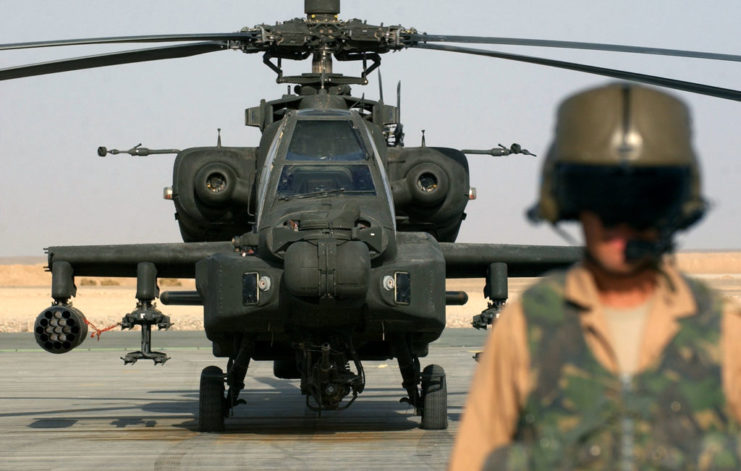
The aircraft’s ability to operate at sea makes it integral for both the Army and Navy, as it can be transported and used in practically any environment. This cooperation between the services is crucial and aids in the US military’s often-used “force projection” – the ability to deploy and sustain armed forces outside of its borders.
It’s nicknamed the “flying tank”
Due to its armor and weaponry, the AH-64 Apache helicopter is nicknamed the “flying tank.” It’s equipped with an automatic 30 mm cannon M230A1 Hughes Chain Gun, along with AGM-114 Hellfire II anti-armor missiles and Hydra-70 2.75-inch rockets. The M230 is carried between the main landing gear, while the other armaments are mounted on 5-meter-long wings.
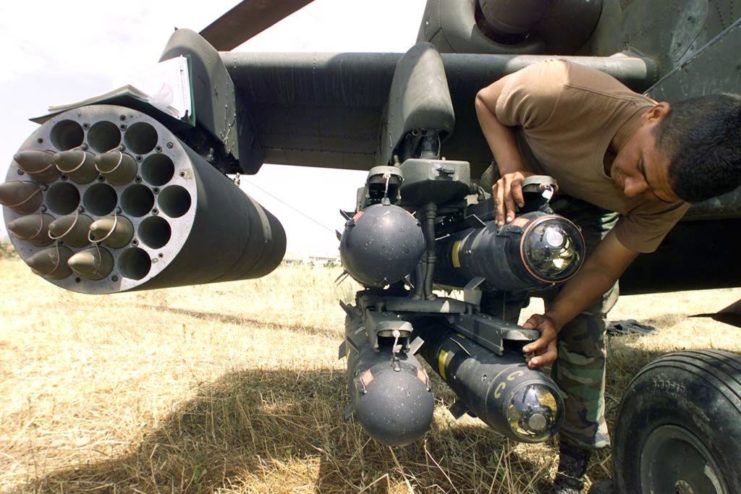
Along with its night-vision sensor and fire control radar, it also has as thick outer armor that can withstand most enemy fire. It’s made from composite boron-kevlar armor plates and blast shields that protect crew members and onboard systems.
Not all AH-64 Apache helicopters are produced in America
While the AH-64 Apache helicopter was developed in the US by Hughes Helicopters, McDonnell Douglas and Boeing, the aircraft has been produced elsewhere. For example, Westmoreland Helicopters in the UK produces a modified version of the AH-64 Longbow – the AgustaWestland Apache – for the British Army at its factory in Somerset.
In Japan, AH-64D Apaches, designated “AH-64DJP.” were built under license by Fuji Heavy Industries. The initial order was for 50 helicopters, the first of which was delivered to the country’s military in 2006. However, production was stopped after 13 were delivered, due to costs.
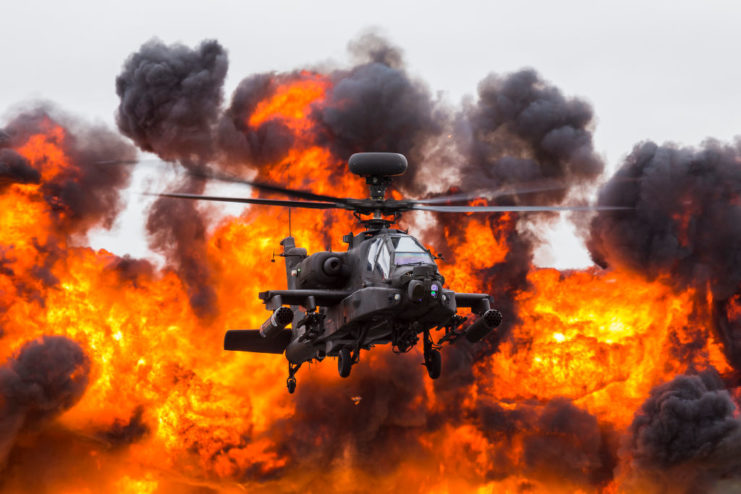
The majority of countries have simply opted to purchase Apaches from the US.
It might be the most difficult aircraft to pilot
The majority of military aircraft are difficult to master, and the AH-64 Apache helicopter is considered one of the hardest. In his book, Apache, Ed Macy, a former pilot with the British Army Air Corps, revealed that the flying tank requires talent and skill to successfully fly.
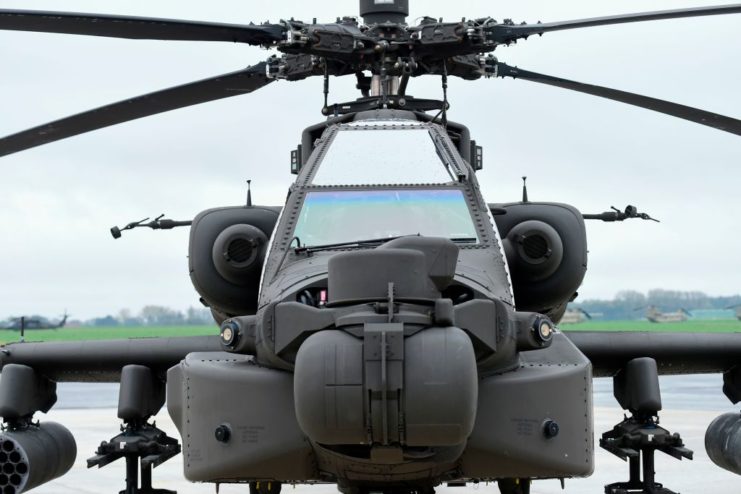
“Flying an Apache almost always meant both hands and feet doing four different things at once,” he wrote. “Even our eyes had to learn how to work independently of each other. A monocle sat permanently over our right iris. A dozen different instrument readings from around the cockpit were projected into it.
“At the flick of a button, a range of other images could also be superimposed underneath the green glow of the instrument symbology, replicating the TADS’ or PBVS’ camera images and the London Radars’ targets.”
Female Apache pilots have set the standard
Prior to the 1990s, it was rare to see a female pilot at the helm of an attack helicopter. Since December 1993, women have made important and noteworthy contributions as AH-64 Apache pilots. The first woman to operate a flying tank was Gwen Schallow, who after her combat service in Bosnia helped implement advanced weapons systems.
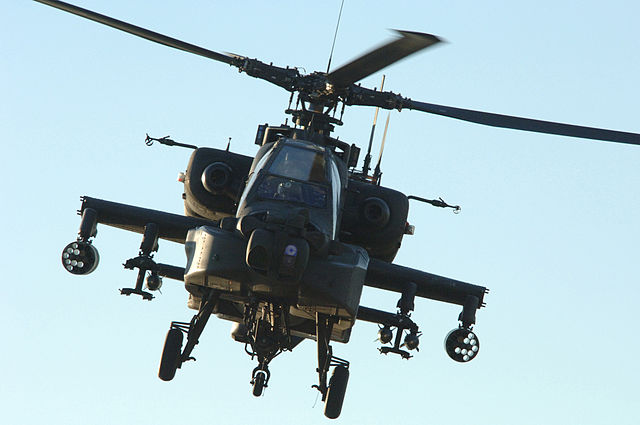
Another notable female pilot is Angela Williams, the first African-American woman to pilot an Apache. Taking the helm in 2000, she wasn’t concerned about being the first Black female to fly the aircraft – she just cared about getting the job done. Speaking with WKRG in 2017, she said doesn’t consider herself a pioneer, but hopes her story can inspire others.
“[Oftentimes] people ask me how does it feel to be the first African-American female pilot,” she said. “My response is always the same, I don’t know any way to feel but like me. I saw a goal that I set for myself and I said nobody’s going to stop me from achieving it. So I don’t know any other way to feel but like me.”
The Apache is one of the most successful attack helicopters in history
The AH-64 Apache is considered one of – if not the – most successful attack helicopters ever developed. Its design has enabled it to dominate the majority of battlefield conditions; its armor can sustain a hit from 23 mm rounds, while the rotor blades are designed to continue flying when damaged. As well, the space between the engines reduces the chance that both can be hit and lost.
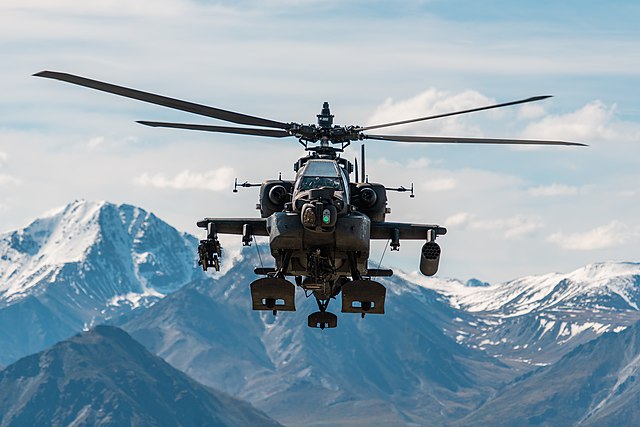
While maneuvering and agility are among the helicopter’s most notable features, a unique helmet design and cockpit sensors mean it’s easy to aim the M230. The gun aims where the operator looks. This frees up crew members to complete other tasks and further lends itself to the Apache’s accuracy and speed.
Hundreds are set to enter retirement
In 2020, the US Army announced it was retiring its aging AH-64D Apache helicopters. It is currently working with contractors to disassemble hundreds of deteriorating aircraft.
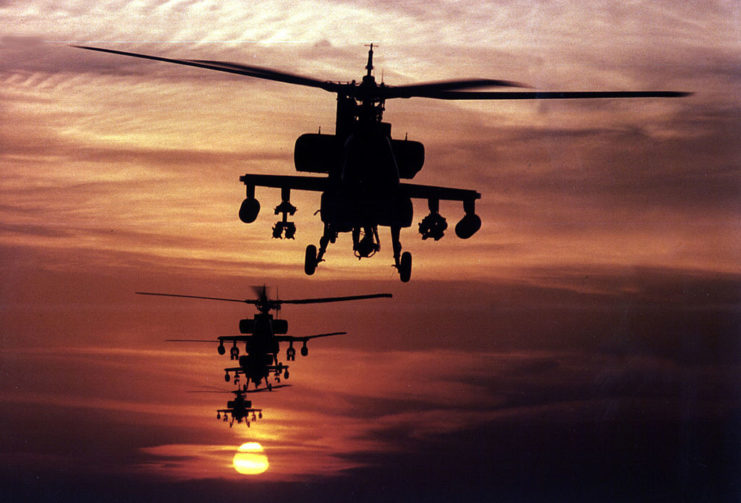
The Army’s Future Attack Reconnaissance Aircraft (FARA) will be the go-to attack helicopter by 2030, despite it being touted as a light-attack reconnaissance craft. The remaining Apache helicopters will be upgraded to the AH-64E variant, sustaining the fleet through to 2040.
